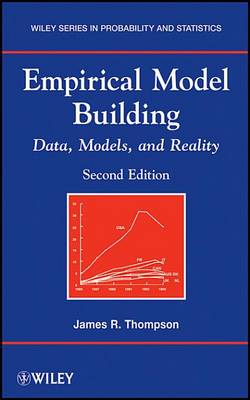Wiley Series in Probability and Statistics
3 primary works
Book 522
A unique, integrated treatment of computer modeling and simulation "The future of science belongs to those willing to make the shift to simulation-based modeling," predicts Rice Professor James Thompson, a leading modeler and computational statistician widely known for his original ideas and engaging style. He discusses methods, available to anyone with a fast desktop computer, for integrating simulation into the modeling process in order to create meaningful models of real phenomena. Drawing from a wealth of experience, he gives examples from trading markets, oncology, epidemiology, statistical process control, physics, public policy, combat, real-world optimization, Bayesian analyses, and population dynamics. Dr. Thompson believes that, so far from liberating us from the necessity of modeling, the fast computer enables us to engage in realistic models of processes in , for example, economics, which have not been possible earlier because simple stochastic models in the forward temporal direction generally become quite unmanageably complex when one is looking for such things as likelihoods.
Thompson shows how simulation may be used to bypass the necessity of obtaining likelihood functions or moment-generating functions as a precursor to parameter estimation. Simulation: A Modeler's Approach is a provocative and practical guide for professionals in applied statistics as well as engineers, scientists, computer scientists, financial analysts, and anyone with an interest in the synergy between data, models, and the digital computer.
Thompson shows how simulation may be used to bypass the necessity of obtaining likelihood functions or moment-generating functions as a precursor to parameter estimation. Simulation: A Modeler's Approach is a provocative and practical guide for professionals in applied statistics as well as engineers, scientists, computer scientists, financial analysts, and anyone with an interest in the synergy between data, models, and the digital computer.
Book 581
Models for Investors in Real World Markets
by James R. Thompson, Edward E. Williams, and M. Chapman Findlay
Published 29 November 2002
Considers neoclassical models in light of results that can go wrong with them to bring about better models. Questions the assumption that markets clear quickly. Offers a timely examination of the LTCM collapse. Written by a group of well-respected and highly qualified authors.
Book 794
A hands-on approach to the basic principles of empirical model building is presented in this book. Included is a series of real-world statistical problems illustrating modeling skills and techniques. The book covers models of growth and decay, and systems where competition and interaction add to the complexity of the model. In addition, there is discussion of both classical and nonclassical data analysis methods.


